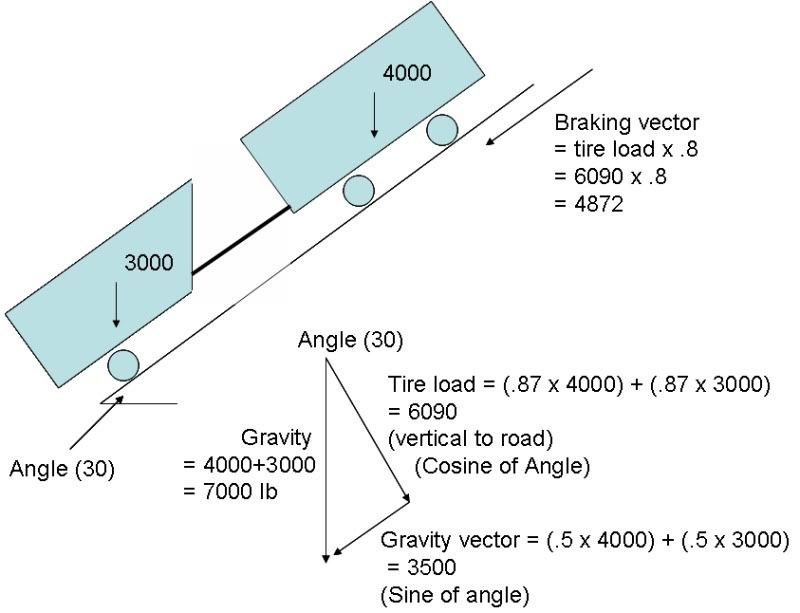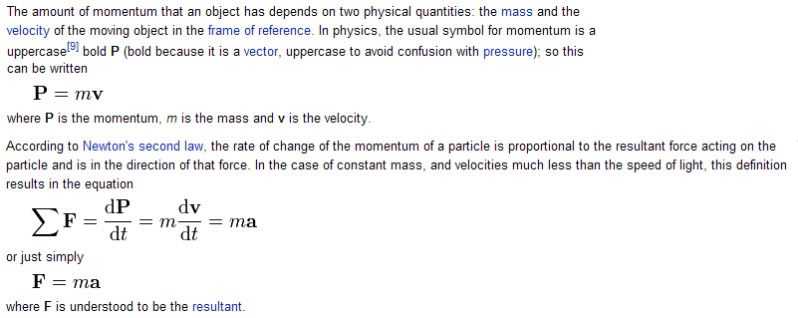Re: not will it tow, but will it stop
lowkee said:
I am after all, trying to teach,
That's the only reason I'm bothering to reply to you. You're trying to teach that 2 + 2 = 7 (if you were at least close, say 2 + 2 = 5, I wouldn't worry about it). You?re trying to teach that it won?t hurt your impellor to run your boat without water. You?re trying to teach that the earth is flat. I'm trying to prevent people from getting bad information.
lowkee said:
You skid to a stop while going up hill.
Do you stop faster than stopping on level ground? Yes.
You're good so far.
lowkee said:
Still looking good!
lowkee said:
So, assuming we're still on the same page so far, where does the extra force come from which causes you to stop faster?
Keep reading and you?ll learn.
lowkee said:
It comes from gravity; In this case the incline of the hill pressing against the tires as you stop the car.
You're at least partly right. The decreased stopping distance in uphill braking does come from gravity, but it has nothing to do with the hill pressing against the tires. More slope = less load on tires. The decreased stopping distance comes from the fact that the sine component of the gravity vector is in the same direction as your deceleration vector. The tires actually have LESS load on them and less available braking force. An easy way to visualize it is to imagine the hill getting steeper and steeper. The steeper it gets, the less load you have on your tires. When it reaches 90 degrees, the load on your tires is zero (this is because the cosine of 90 degrees is 0, as explained in my earlier post).
As I stated in my earlier post, your braking force is the component of gravity perpendicular to the road times the tire coefficient of friction. So you can see that if you have NO component of gravity perpendicular to the road (on a straight up road, your gravity component would be parallel to the road) you have NO braking force available from the tires. It works the same way on lesser inclines. More slope = less tire loading (why do you think you make sure a scale is level before you weigh something? If you weighed your 7000 pound rig with a scale tilted at a 30 degree angle it would tell you it weighed 6090 pounds). Maybe the picture below will help:

Your braking vector is opposite your direction of travel. If you?re traveling uphill, it?s in the same direction as the sine component of gravity. So in the example in the picture, traveling uphill, your total braking force is the sum of the force provided by your brakes (4872 lb) and the sine component (3500) of the gravitational force. Your total braking force would be 8372 pounds of force.
As stated in my earlier post, on flat ground, your braking force would be 5600 pounds.
If you were going downhill in the example picture the sine component of gravity would be in the opposite direction of your braking force (your braking force vector would point uphill). So you would have to subtract it from your braking force. Your braking force on a 30 degree downhill slope would be 4872 ? 3500 = 1372 pounds. If your braking force = 0 or less it means that the hill is so steep that your brakes won't hold you on it. You'll just slide to the bottom.
So the 3 cases we have with your 7000 pound example are:
Uphill (30 degree)= 8372 pounds of braking force = 8372/7000 = 1.20 G
Flat = 5600 pounds of braking force = 5600/7000 = .80 G
Downhill (30 degree) = 1372 pounds of braking force = 1372/7000 = .20 G
lowkee said:
Oh wait, mass * deceleration (stopping) is momentum. You handily quoted wikipedia on that one.
WRONG, WRONG, WRONG!!
Your statement above pretty much sums up your whole problem. Read the Wikipedia post. If you do, you?ll see in the first sentence that momentum is mass times VELOCITY. It is NOT mass times ACCELERATION (or deceleration, same thing but opposite direction) as you stated above!! Apparently you do not understand the difference between velocity and acceleration and it is causing you to provide bad information.
Braking = Change in velocity = acceleration (deceleration is just acceleration with a negative direction)
MOMENTUM = mass x VELOCITY (velocity
is not what we're talking about)
FORCE = mass x ACCELERATION (acceleration
is what we're talking about)
If you're talking about braking, you're talking acceleration, NOT velocity. So you use force, NOT momentum. You're garbling stuff together that you don't understand and posting bad information.
Where in your equation is the trailer?
Not sure I understand what you?re asking. It's right there in the quote box you posted above your question:
45auto said:
Your 7000 lb rig has a mass of 7000/32.2 = 213 slugs.
Your example was a 4000 pound car and a 3000 pound trailer. Total is 7000 pounds that I used in all my equations.
lowkee said:
Are you simply trying to impress people with your wikipedia skills or is there a followup equation where you mention the momentum of the trailer behind the vehicle?
If you would actually read the Wikipedia quote maybe you would understand how momentum is contained in the F = ma equation. It comes back to the difference between velocity and acceleration. You can't have acceleration without velocity. In calculus, you'll learn that Velocity is the first derivative of Position. Acceleration is the first derivative of Velocity, and the second derivative of Position. Velocity is an inherent component of acceleration. You can see it in the units:
Position = feet
Velocity = feet per second
Acceleration = feet per second per second
If you refuse to learn, no big deal. I'm just trying to keep other people from becoming confused by your misconceptions. Maybe if you could provide some references to your version of physics (good luck!) it would help. Here's you a link to a Physics 101 synopsis of braking:
http://www.physics.sc.edu/~rjones/phys101/braking.html
Count how many times "momentum" is mentioned .....
lowkee said:
That is the point here, right? To share knowledge rather than scare people away from it.
I?m trying to share knowledge. Not sure what you?re doing.





















